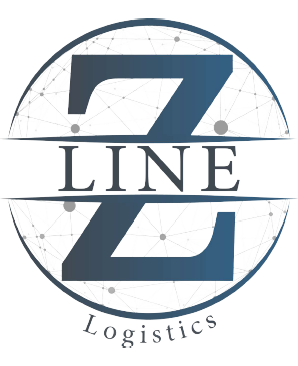Table of Contents
The concept of supply network deals with the interwoven web of suppliers, manufacturers, distributors, retailers and the other entities involved in the process associated with production, distribution, and delivery of goods and services till final customer.
Here, we talk about supply networks as a whole which cover the raw material flow, information transfer, and financial obligations among the several steps that make up the supply chain, starting from sourcing the raw materials to selling finished products to the final customers.
What Are Supply Chain Networks?
Organizations have a wide variety of supply chains that can be of different scopes and scales depending on where the supply chains operate and what the business demands.
Such a structure usually includes several no-single-tier suppliers as well as interregional and international partners, all within the country, and the rest of the globe.
Key components of supply chain networks include:
- Suppliers: Firms which supply charcoal, components, or inputs needed in production processes are the entities that supply components, services, and raw materials.
- Manufacturers: Places in the symbol of acquisition and manufacture of the raw materials into finished goods. Manufacturers may have their own factories or subcontract some manufacturing steps to contract manufacturers.
- Distributors and Wholesalers: Distribution agents that serve as the middlemen and facilitate direct sales from the manufacturer to the retail outlet or end users. Distributors and wholesalers have a vital mission in supply chain management due to their inventory, transportation, and storage responsibilities.
- Retailers: Companies that sell merchandise to customers directly via on-site stores, e-commerce platforms or other sales networks. In addition to manufacturers, wholesalers, and online sellers, end customers encounter retail establishments as the final thread in the supply chain.
- Logistics Providers: Businesses providing transportation and warehouse functionality could secure freight movement across the border. Logistics providers are absolutely behind the smooth transition of goods from one point of the network of supply chain to another while the transportation cost and delivery time are favorable.
- Technology Platforms: The networks portraying different information technology systems and platforms that cover the communication facilities, collaboration, and data exchange with other partners in the supply chain. With technical platforms such as enterprise resources planning (ERP) systems, supply chain management (SCM) software, and electronic data interchange (EDI) coordination as well as visibility themselves being made easier within supply chain networks.
Read more: Freight forwarding services in Dubai.
What Are the Advantages of Supply Chain Networks?

Supply chain networks offer numerous advantages for businesses, including:
Increased Efficiency:
Through the management of the material, information, and resource flow through the supply networks, the businesses are able to run a more streamline operations, reduce lead times and achieve the optimal measure of waste, which in the end, lead to increased efficiency and cost reduction.
Improved Collaboration:
Supply chain networks are a platform for not only information sharing and resource implementation but for different partners, including suppliers, manufacturers, distributors, and retailers, to work in partnership and collaboration.
The improved information distribution and interlink are not only the source of strong decision making, but also quicker resolving and tighter integration anywhere in the chain.
Enhanced Visibility:
Supply chain networks will give businesses end-to-end supply chain visibility into the entire supply process.
Better management of goods can be ensured by tracking the location of goods, optimizing inventory levels, and identifying bottle-necks or inefficiencies that may be present.
Better visibility helps in taking timely corrective action and more effective management by improving promptness to deal with issues in the present time while they are still happening.
Risk Mitigation:
It helps businesses to overcome sudden disruptions such as natural disasters, geopolitical turmoil and failure of suppliers.
One of the ways to achieve this diversification is distributing risks among suppliers, manufacturing, and distribution facilities within the supply chain network.
Flexibility and redundancy are all about availability of resources that should get acted upon to enhance the reliability and availability of firm operations.
Market Expansion:
The better functioning of supply chain networks allows businesses to increase product sales in new places and sell them to bigger markets.
Companies may be able to utilize international supply, shipment and logistics resources to reach hitherto unexplored growth and revenue streams through global sourcing.
Customer Satisfaction:
Customer satisfaction is what makes efficient supply chain networks acceptable and so, they contribute in letting the customer get their products in time, always available and whenever the customer needs them.
Superior services and reliability which can make current customer relationships stronger and at the same time keep them longer as regular clients who will share positive customer experiences with friends and relatives.
Competitive Advantage:
Effective supply chain management and efficient network creation are among the main strategies that can help businesses keep their leadership role in the market.
When companies get their goods there fast, at lower prices, and with higher standards than rivals can they separate themselves in the market and acquire a market share.
Altogether, supply chain networks serve as one of the most important mechanisms for obtaining operational excellence of businesses, and increasing their capabilities to shape cross-industry dynamics on the markets.
Through maximizing advantages of the supply chain networks, enterprises have the opportunities of starting long-term reliable business development and expansion in power competition in today’s commercial arena.
What Are The Types of Supply Chain Networks?
Although the world supply chains can be divided into different types considering their structure, configuration, as well as the interrelations among supply chain partners.
Some common types of supply chain networks include:Some common types of supply chain networks include:
Linear Supply Chain Networks:
Erecting a linear supply chain network also signifies the movement of materials and goods conforming to a progression path from suppliers to manufacturers, then distributors, and finally, either retailer or end user.
Such a linear process of the conventional supply mindset has several rigid steps and limited amount of flexibility.
Hub-and-Spoke Supply Chain Networks:
A spoke-like supply chain network, whereby distribution centers or hubs act as a consolidating, storage and distribution center of goods is called a hub-and-spoke network.
Suppliers and manufacturers are seen to operate from their central hubs that only ship their products to the regional and local locations (spokes).
This network construction provides the possibility of an improvement in terms of efficiency and transportation costs, and the ability to respond to consumer demands expeditiously.
Decentralized Supply Chain Networks:
The nodes of the network representing the decentralized supply chain have autonomy and, in turn, they are operated independently within the supply chain.
Networks, consisting of nodes such as manufacturing facilities or distribution centers, are in charge of processing their own inventories, producing units as well as logistics.
Autonomy and flexibility of decentralized networks could become a problem with coordination across the webs.
Integrated Supply Chain Networks:
Supply chain can be linked to an integrated network through supply network partners which involve exchange of information and sharing resources and processes whereas for decision-making.
The integrated networks are those networks employing technology and data sharing platforms that enable visibility, coordination and synchronization on the real-time across the entire supply operation, improving the efficiency and responsiveness.
Virtual Supply Chain Networks:
The Virtual Supply Chain Network is a collection of collaborating partners and resources that support running a faster supply chain temporally and give required supply chain results.
Virtual networks Worldwide use outsourcing, partnership, and cooperative networks to give access to specific knowledge, skills, abilities needed, and licensed resources.
Global Supply Chain Networks:
The worldwide supply chain system has a nodal architecture that extends through several countries or areas, involving suppliers and manufacturers in different nations and different regions.
International networks allow enterprises to look for raw materials, put up facilities as well as supply markets on market strategies, efficiencies and the advantage of a large variety of choice.
Agile Supply Chain Networks:
An adaptable supply chain network is designed to promptly react to changing supply and demand patterns as well as the possible supply chain disruptions experienced across the supply chain.
Agility in networks is manifested through the flexibility, rapid response, collaboration among the supply chain partners, among other things, in the production and distribution of the goods and services to meet with the diversified market requirements.
The different networks provide their own strengths and weaknesses, and the business tends to select the network form according to market conditions and business goals, such as industry features, market orientation and competitiveness, and long-term strategies.
Eventually, the objective is to consolidate a supply chain network that is optimal based on efficiency, resilience, and customer value related to the business industry that is changing at a fast speed.
FAQs
What is meant by supply chain network?
A supply chain network refers to the interconnected system of organizations, resources, activities, and technologies involved in the production, distribution, and delivery of goods and services to customers.
It encompasses the flow of materials, information, and finances across various stages of the supply chain, from raw material sourcing to final product consumption.
Supply chain networks can vary in complexity and configuration, depending on factors such as industry, market dynamics, geographic scope, and business objectives.
What is an example of a supply network?
An example of a supply network is the global supply chain network of a multinational corporation in the electronics industry.
This supply network may include suppliers of raw materials such as metals, plastics, and electronic components located in different countries around the world.
These materials are then transported to manufacturing facilities in various regions, where they are assembled into finished products.
The finished products are then distributed to regional warehouses or distribution centers before being shipped to retailers or directly to customers worldwide.
This complex network involves multiple tiers of suppliers, manufacturers, distributors, logistics providers, and other stakeholders collaborating to meet customer demand and deliver value.
What are the 4 main areas of supply chain?
The four main areas of the supply chain are:
Supply: Involves the procurement of raw materials, components, and services from suppliers to support production or service delivery.
Manufacturing or Production: Encompasses the conversion of raw materials into finished products through manufacturing processes, assembly, or customization.
Distribution: Involves the storage, transportation, and delivery of finished products to customers or distribution centers through logistics and distribution channels.
Demand Planning and Customer Service: Focuses on forecasting customer demand, managing inventory levels, and providing responsive customer service to meet customer needs and preferences.
What are the 5 types of supply chain?
The five types of supply chain are:
Continuous Supply Chain: Characterized by a constant flow of materials and products with minimal inventory levels and rapid replenishment to meet continuous demand, often seen in industries such as food and beverage or basic commodities.
Fast Fashion Supply Chain: Designed to quickly respond to changing fashion trends and customer preferences, with short lead times, frequent product introductions, and agile production processes to minimize inventory and capitalize on market opportunities.
Agile Supply Chain: Focuses on flexibility and responsiveness to accommodate changing market conditions, customer demands, and supply chain disruptions, often seen in industries with volatile demand or short product life cycles.
Lean Supply Chain: Aims to maximize efficiency and minimize waste by eliminating non-value-added activities, optimizing production processes, and reducing inventory levels, commonly used in industries such as automotive manufacturing or consumer electronics.
Green Supply Chain: Emphasizes sustainability and environmental responsibility by reducing carbon emissions, conserving natural resources, and minimizing waste throughout the supply chain, driven by regulatory requirements, corporate social responsibility, and consumer preferences.
Therefore, to support the modern business world effectively, supply chains acting as a link between various undertakings provide unobstructed movement of goods, information, and resources.
Through the utilization of interdependent suppliers, manufacturers, distributors and retailers a business is able to gain efficiency, increased resilience and enhanced competitive capabilities in a complex business environment.
With the tech growth and dynamic marketplace, the significance of the supply networks will remain to be on the rise during the foreseeable future, a leading force for innovation and change in various industries.
Globalization brings forward a multi-layered two-way channel of interactions and communications between business organizations which, if known and properly handled, offer opportunities to the businesses for overcoming the challenges of globalization, risk management and capitalization on new business trends to lead to growth and success in the future of supply chain management.




